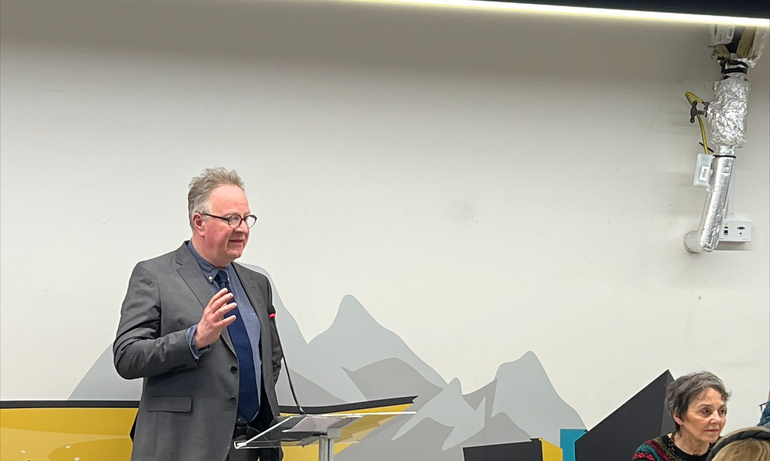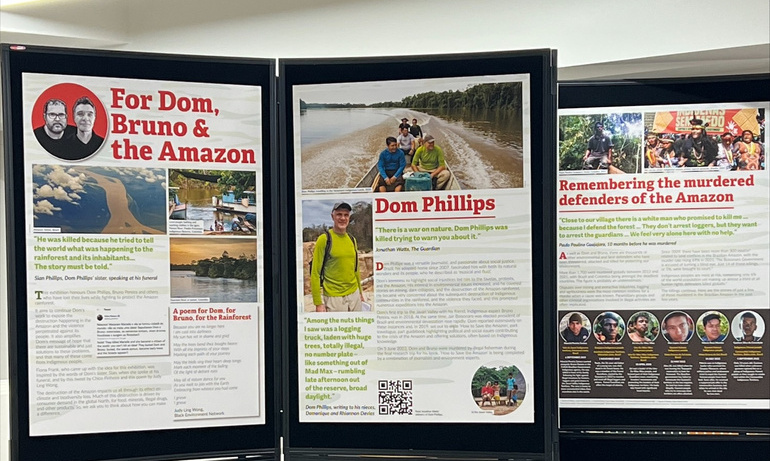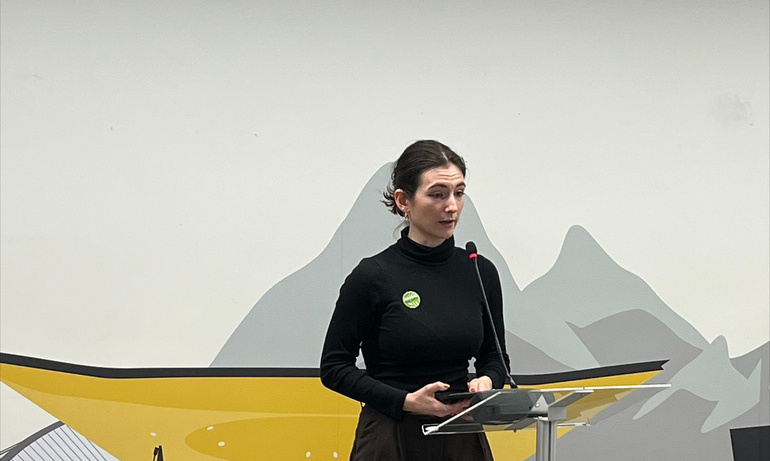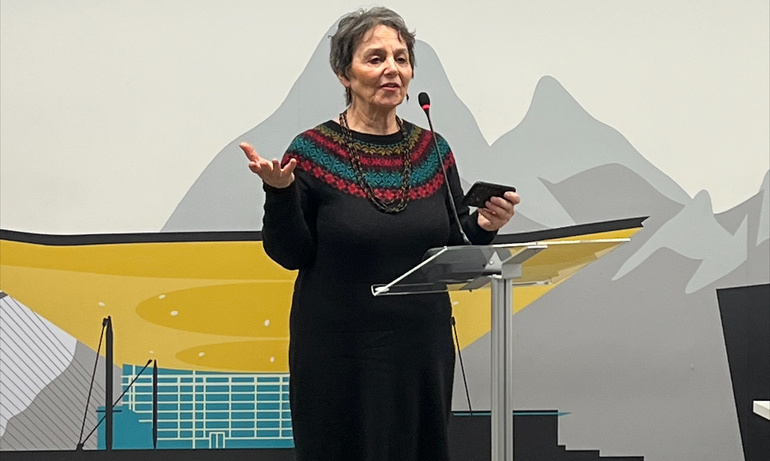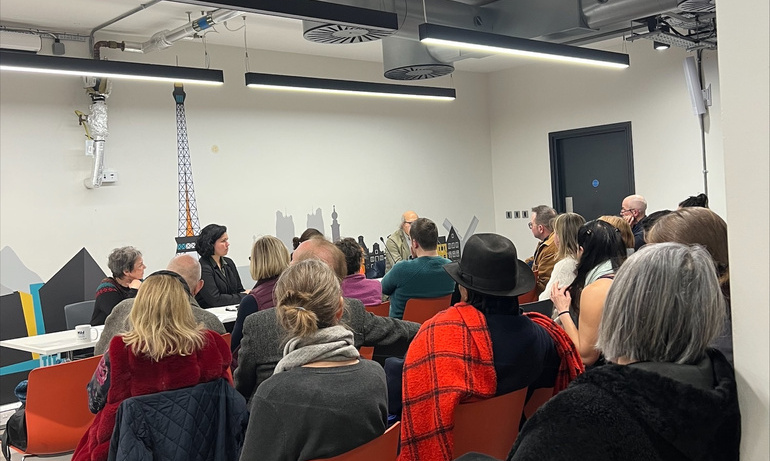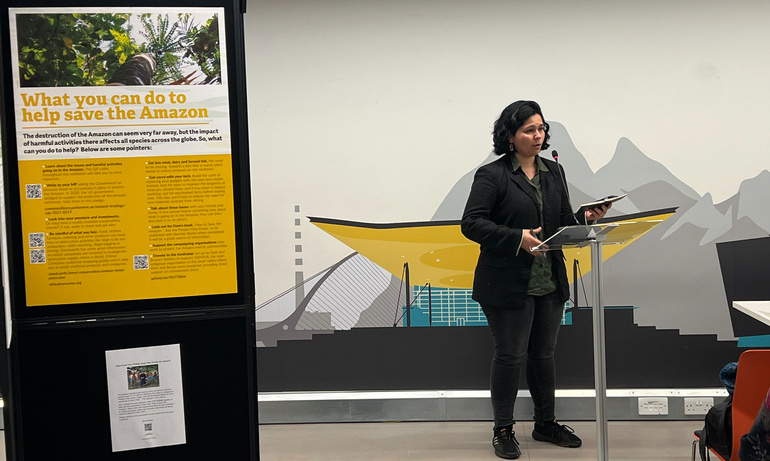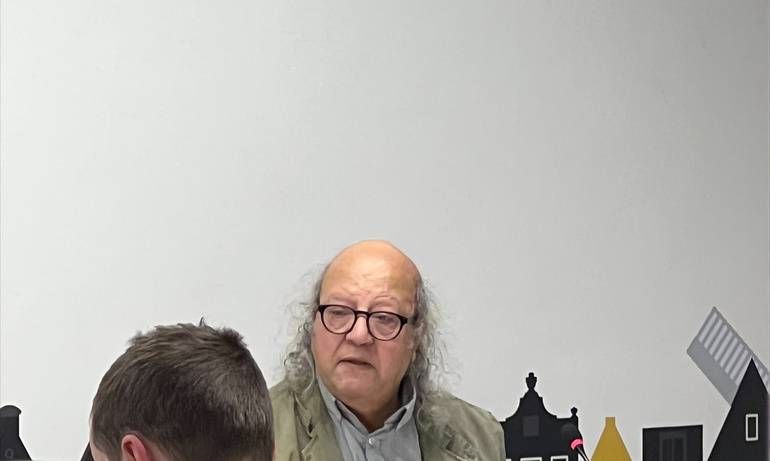NUJ honours Dom Phillips and Bruno Pereira
The union hosted an evening discussion alongside an in-person exhibition exploring hopeful solutions for change in the Amazon.
From 18-20 January, the NUJ hosted For Dom, Bruno & the Amazon; an exhibition exploring key issues including the impact of illegal mining, logging and fishing in the rainforest. Alongside practical steps to positively impact the Amazon, it showcased hopeful solutions. FENAJ, the journalists’ union in Brazil contributed context on the actions of criminal gangs and journalists’ safety, used as part of the exhibition.
Tim Dawson, NUJ NEC member chaired an evening event on 19 January, welcoming attendees to the union’s headquarters in London. “It’s important we reflect on what we can do in the face of tragedy” he said, recognising the exhibition had allowed new audiences to “see the truths Dom and Bruno paid with their lives to try and reveal.”
Last year, journalist Dom Phillips and indigenous expert Bruno Pereira were killed in the Amazon while undertaking research for Phillips’ book. Dawson told attendees their deaths were among a total of 68 journalists killed in 2022, according to data captured by the International Federation of Journalists (IFJ).
Exhibition organiser Fiona Frank from Halton Mill thanked the NUJ for hosting the exhibition, and for financial support that had helped in organising activities to honour both men. Frank shared her journey to becoming involved, explaining Phillips’ sister Sian Phillips had been her choir leader for several years. With her agreement, Frank worked closely with Alison Cahn and many others to create a programme of activities to accompany the exhibition.
She said:
“I watched the speech Sian made at Dom’s funeral in Brazil - I must have played it about 20 times before I decided to turn my emotion into action. In her speech she committed herself and her family to continuing Dom’s urgent work in highlighting the crisis in the Amazon and identifying solutions.
“I have a bit of form in organising events, and I have spent some time in Peruvian Amazonia with an anthropologist friend. I retired two years ago and I had some time available . So I felt I was just the right person to help to tell Dom’s story and to put out his message.”
Second speaker of the evening Domonique Davies informed the engaged audience that Phillips was the first non-indigenous person to receive the certificate of indigenous acknowledgment. “He was an experienced and brilliant journalist” she said, urging attendees to continue spreading the story of Dom and Bruno, and of the Amazon.
Davies shared Phillips' book would propose sustainable development models key to forward progression, highlighting that the impact of issues including illegal activitty is felt by those who inhabit the rainforest but also with wider rippling effects globally.
She said:
“It’s easy to think a rainforest on the other side of the world doesn’t really affect us, but citing the first law of ecology, everything is connected to everything else.”
Davies and her sister Rhiannon are Dom’s nieces and co-creators of the exhibition.
Dr Jamille Pinheiro Dias, lecturer in environmental humanities, shared the dangers of framing Phillips’ and Pereira’s work as an adventure. Her discussions with Pereira’s wife Beatriz Matos had reflected on president Bolsonaro’s government’s failure to locate both men more promptly, and Dias spoke of the impact of rights violations on indigenous people.
She said:
“We will keep honouring Dom and Bruno’s lives and others who have died defending the Amazon.”
Jim Boumelha, former IFJ president and chair of the NUJ’s Policy committee extended the IFJ’s condolences to families and thanked all those involved in the exhibition, and ongoing work.
He said:
“Dom and Bruno cared. They cared about the loss of biodiversity and most importantly they cared about the loss of indigenous people losing their livelihoods.”
Boumelha discussed FENAJ’s relentless campaign urging authorities to search for Phillips and Pereira when initially missing.
“He was not in the wrong place at the wrong time. He understood so well the politics of this dark period of the issues in Brazil.”
Boumelha shared that it was clear new president Luiz Inácio Lula da Silva’s government had environmental and social justice among their political priorities.
Phillips’ book will be completed in collaboration with journalists and experts and published in 2024. NUJ members can make donations to assist with its completion. Donate to the fund.
Find out more at www.haltonmill.org.uk/dombruno
Promoting their work is the best way to honour Dom and Bruno - speech by Tim Dawson
It is an enormous privilege to be hosting this exhibition dedicated to the work of Dom Phillips and Bruno Pereira, here in the headquarters of the National Union of Journalists.
Long before last summer, Dom and Bruno’s work had many admirers in this building. It was clear that Dom was a tenacious, imaginative, brilliant reporter who cast bright light on important stories that would otherwise have been unknown. Because of that, as news about them started to drip out last June, horror fell over all of us involved in running Dom’s union. First they were missing, then fragments of their clothing were found, and finally it was confirmed that they had been murdered.
Such a tragedy challenges all of us to respond. Just what can we do – not to make sense of their deaths, that is impossible – but to find consolation despite the terrible backdrop.
Thinking about this, I wanted to set their murders into some kind of context. The International Federation of Journalists maintains an annual list of journalists killed while doing their job. There were 68 last year.
This list is not comprised of people who crashed their car on the way to an alignment, or developed fatal food poisoning in unfamiliar territory. They are journalists who were killed because of their work;
killed because someone wanted them shut up;
killed because someone thought them too close to an inconvenient truth.
The ‘killed’ figure goes up and down a little each year, but one fact is unchanging. Journalism is a very dangerous way to make a living.
I have no doubt that Dom and Bruno were well aware of these risks. They were not gung-ho teenagers, high on ‘Nam movies, chancing all to make their names. Both were dedicated, clear-headed, seasoned professionals, with enough experience to know exactly what they were doing. They staked their lives because they believed that the truths they were pursuing deserved that risk.
They were committed to safeguarding indigenous communities, to saving natural habitats and ensuring that the Amazonian rainforests survive to fulfil their vital role in our world’s ecosystem – causes that should concern us all.
When someone is willing to expose themselves to such danger to do their work, it behoves the rest of us to ensure that what they reveal delivers on its potential. That is why an exhibition of this kind is so important, because it profiles and reimagines Dom and Bruno’s work.
Placing what they did in a fresh context, away from news print and website pixels has the capacity take it to a new audience, and to help their existing audiences to reconsider what they exposed. It is a means to ensure that Dom and Bruno's work achieves the ambitions they had for it, even if they are not around to enjoy the plaudits.
This exhibition also prompts us to think more about the safety of journalists. This is a cause to which my union has been committed since its inception, more than a century ago. And it has occupied our work more and more in recent years. I could detail plenty of initiatives – work with the government’s Committee for the Safety of Journalists, training modules, information apps and so on. The most important, in this context, however, is our role supporting the International Federation of Journalists' campaign to end immunity for those who target journalists.
All over the world, corrupt regimes kill reporters and photographers and no one faces prosecution. It is a global scandal. But if the careers of Dom and Bruno, and the posthumous celebrity they have achieved, can do a little to bring this to an end, then some good will have come from their tragedy. Hopefully it will mean that the next gutsy reporters who set off up the Amazon in search of the truth will be just a little bit safer.
For all those reasons, the more people who enjoy this display the better. So suggest to a friend or two that they put up the exhibition in their own social space (several editions are available). Press your contacts visit the exhibition. Tell everyone you know to look up the website where all the material is housed. Ensuring that Dom and Bruno's work reaches the widest possible audience is the last thing that murderers would have wanted and the best way to best way to celebrate their lives. If we all do this effectively, their sprits will resonate for decades to come.
Tim Dawson is a member of the National Executive of the National Union of Journalists and a former president of his union.

